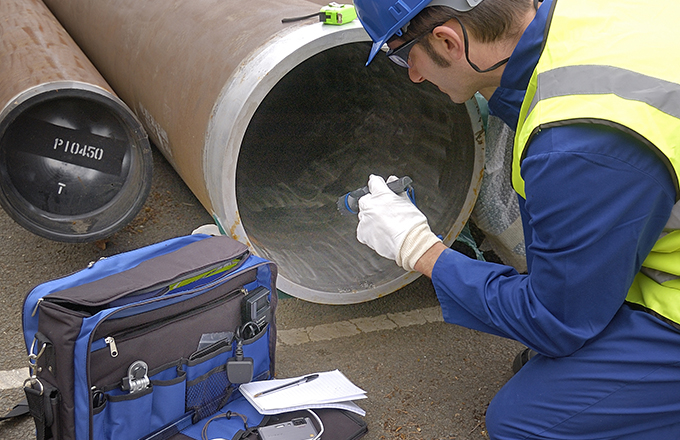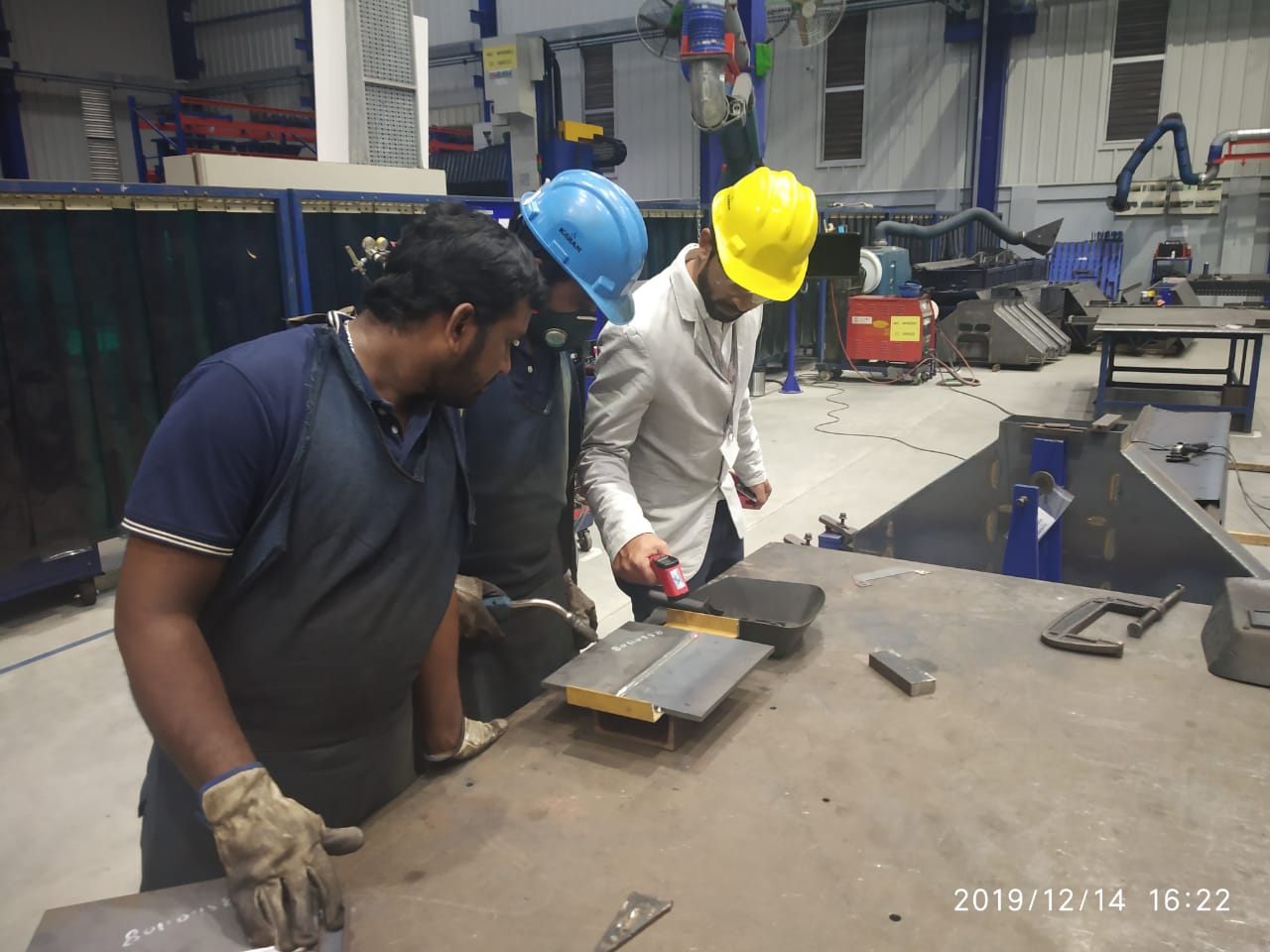Discovering the Significance of Welding Inspection in Industrial Applications: Protecting Versus Failures and Enhancing Durability
Welding evaluation offers as a critical line of defense in commercial applications, guaranteeing the architectural integrity and reliability of welded parts. By systematically determining defects such as porosity and incomplete blend, evaluations not just stop failures but additionally expand the life expectancy of necessary possessions.
Role of Welding Evaluation
Welding inspection offers as an essential secure in industrial applications, ensuring that bonded frameworks fulfill defined criteria of high quality and security. This process entails a systematic exam of welds to validate their honesty, stamina, and compliance with recognized codes and specifications. The role of welding inspection is multifaceted, incorporating both visual analyses and non-destructive testing methods, which might include ultrasonic, radiographic, or magnetic bit testing.

Additionally, welding evaluation plays a crucial duty in regulatory compliance. Ultimately, the function of welding assessment is crucial in promoting security, enhancing performance, and securing investments in commercial infrastructure.
Usual Welding Problems

Among one of the most common flaws is porosity, defined by small gas pockets trapped within the weld steel. This takes place as a result of impurities or incorrect protecting gas, compromising the weld's strength. An additional substantial flaw is incomplete fusion, where the weld steel falls short to bond effectively with the base product, potentially leading to architectural weak points.
Cracks can also create during or after the welding procedure, usually connected to thermal anxieties or incorrect cooling prices. Furthermore, undercutting, where the base steel is worn down along the weld bead, can damage the joint and is commonly caused by excessive warm input or incorrect strategy.
Furthermore, absence of penetration takes place when the weld metal does not get to the root of the joint, causing inadequate stamina. Understanding these typical problems is crucial for inspectors and welders alike to make certain that welded frameworks meet safety and performance requirements, inevitably avoiding possible failings in industrial applications.
Benefits of Normal Inspections
Regular assessments act as an important safeguard in guaranteeing the dependability and long life of bonded structures. These examinations identify potential flaws and weak points that might compromise the integrity of welds, permitting prompt remediation before concerns intensify. By applying a structured assessment routine, organizations can substantially decrease the threat of disastrous failings that may bring about pricey downtime, tools substitute, and even accidents.
Furthermore, regular assessments add to boosted top quality control throughout the welding procedure. By adhering to a Click This Link consistent assessment timetable, useful link companies can make certain that their welding methods fulfill established top quality criteria and finest techniques. This not only cultivates a culture of liability but also encourages continual enhancement among welding workers.
In addition, normal inspections help with far better upkeep planning. By identifying wear and tear early, organizations can tactically arrange substitutes and fixings, reducing disturbance to operations. This aggressive method ultimately causes extensive property life expectancy and boosted general productivity.
Finally, a commitment to routine assessments can enhance a company's reputation in the sector. Stakeholders and clients increasingly worth companies that prioritize security and high quality, thus improving count on and potentially leading to increased organization opportunities.
Market Requirements and Regulations
Abiding by sector standards and laws is a fundamental element of welding inspection that matches the advantages of normal evaluations. These requirements, developed by organizations such as the American Welding Society (AWS) and the American Culture of Mechanical Designers (ASME), provide a framework for finest techniques in welding procedures, materials, and evaluation methods. Conformity with these policies makes certain that welds meet the needed quality and security standards, dramatically minimizing the risk of architectural failings.
Regulative bodies like the Occupational Safety and Wellness Management (OSHA) further impose guidelines that safeguard employees and the setting throughout welding procedures. By complying with these established requirements, markets can improve the dependability of their components and structures, guaranteeing they execute as planned under numerous functional problems.
Additionally, adherence to sector criteria fosters consistency in high quality control, facilitating smoother communication among stakeholders and regulative firms. This positioning not just minimizes obligation threats yet likewise improves the integrity of organizations in open markets. Ultimately, conformity with welding requirements and policies is not merely a lawful responsibility; it is an important investment in safety and security, efficiency, and long-term operational success.
Future Trends in Welding Examination
As sectors remain to evolve, the future of welding examination is positioned to incorporate sophisticated innovations that boost precision and performance. One of one of the most substantial fads is the adoption of automation and robotics in evaluation processes. Automated systems can carry out evaluations swiftly, lowering human error and raising throughput in making settings.
In addition, the assimilation of fabricated knowledge (AI) and artificial intelligence algorithms will certainly enable predictive analytics, enabling real-time evaluations and aggressive maintenance (Welding Inspection Gilbert Arizona). By assessing data from previous examinations, these innovations can recognize patterns that might suggest potential failings, thereby expanding the life expectancy of bonded parts

Furthermore, the pattern in the direction of address digitalization will certainly lead to improved information management systems that help with far better tracking, reporting, and compliance with industry standards. In recap, the future of welding inspection is characterized by technical improvements that guarantee to substantially improve dependability, security, and functional effectiveness in different commercial applications.
Final Thought
In verdict, welding assessment offers an essential feature in guaranteeing the integrity and resilience of bonded frameworks across various commercial applications. As improvements in technology proceed to advance, the future of welding assessment promises raised accuracy and effectiveness, ultimately adding to the longevity of important infrastructures.
Welding examination serves as a crucial line of protection in industrial applications, making sure the architectural integrity and integrity of welded parts.Welding inspection offers as a crucial guard in industrial applications, making sure that welded frameworks meet defined standards of high quality and safety - Welding Inspection Gilbert Arizona. Inevitably, the function of welding inspection is crucial in advertising safety, boosting performance, and safeguarding financial investments in commercial facilities
These standards, developed by organizations such as the American Welding Society (AWS) and the American Society of Mechanical Designers (ASME), offer a structure for best methods in welding procedures, products, and assessment strategies.In final thought, welding inspection serves an essential function in making sure the honesty and resilience of welded structures across various industrial applications.